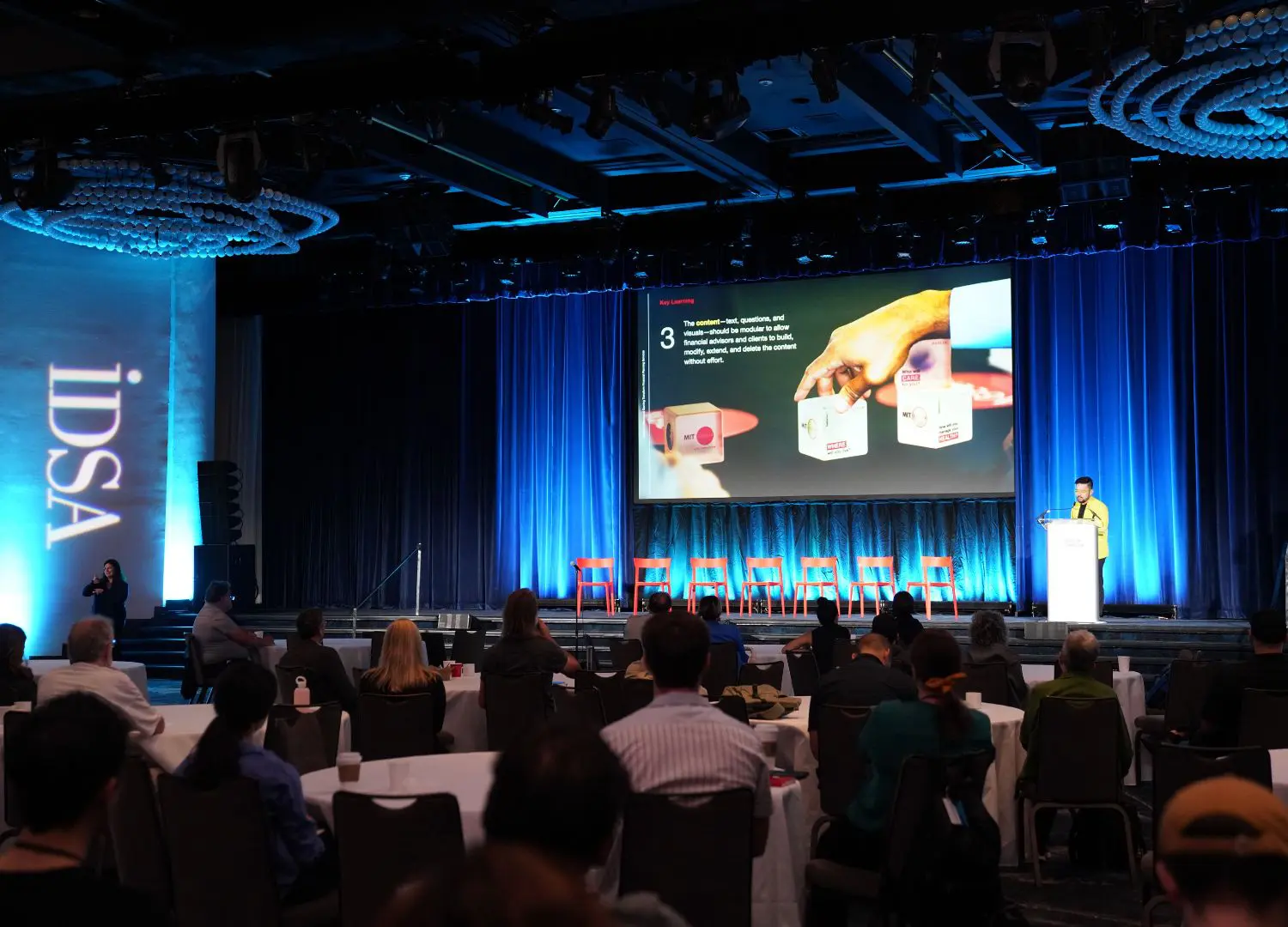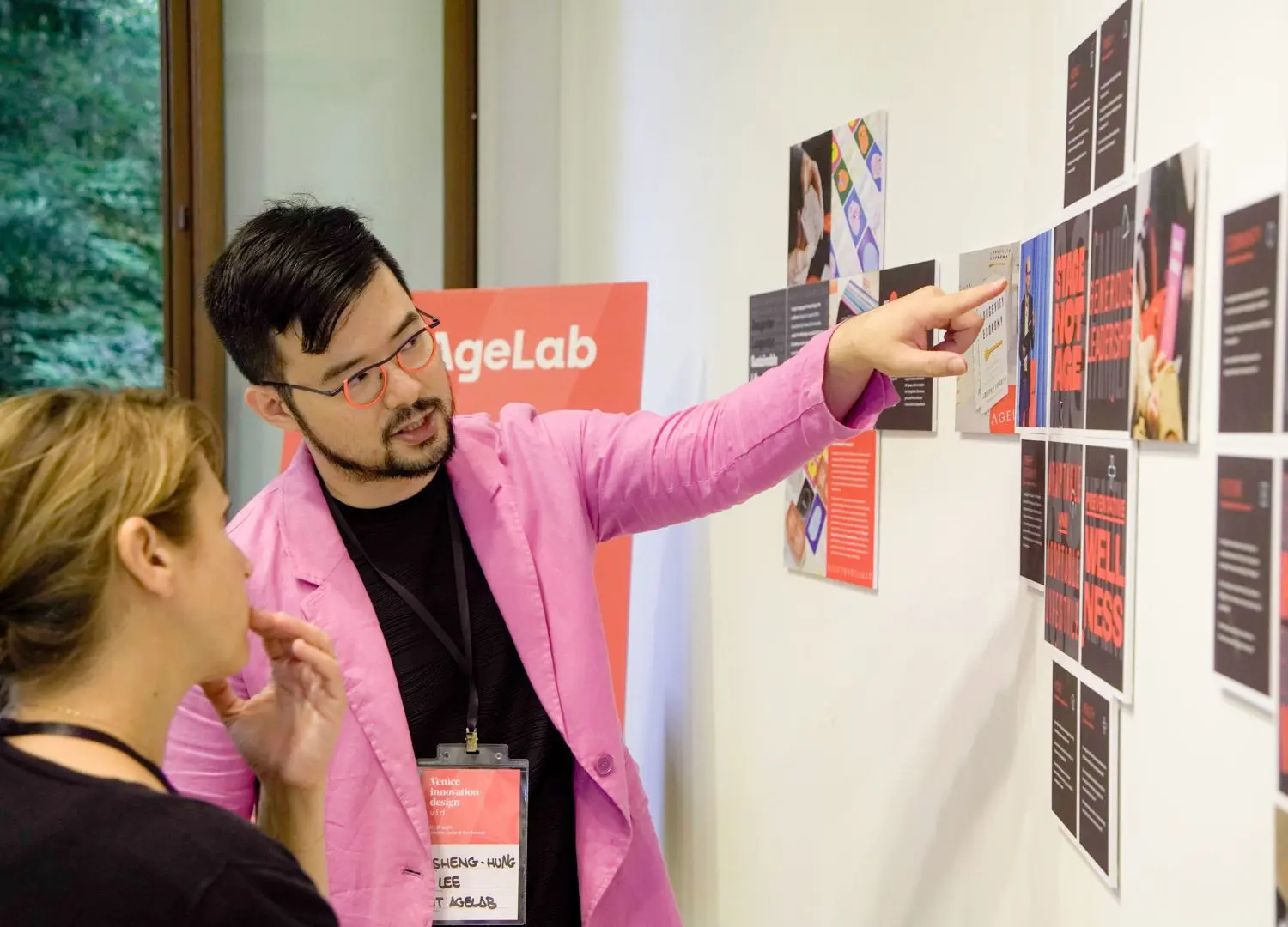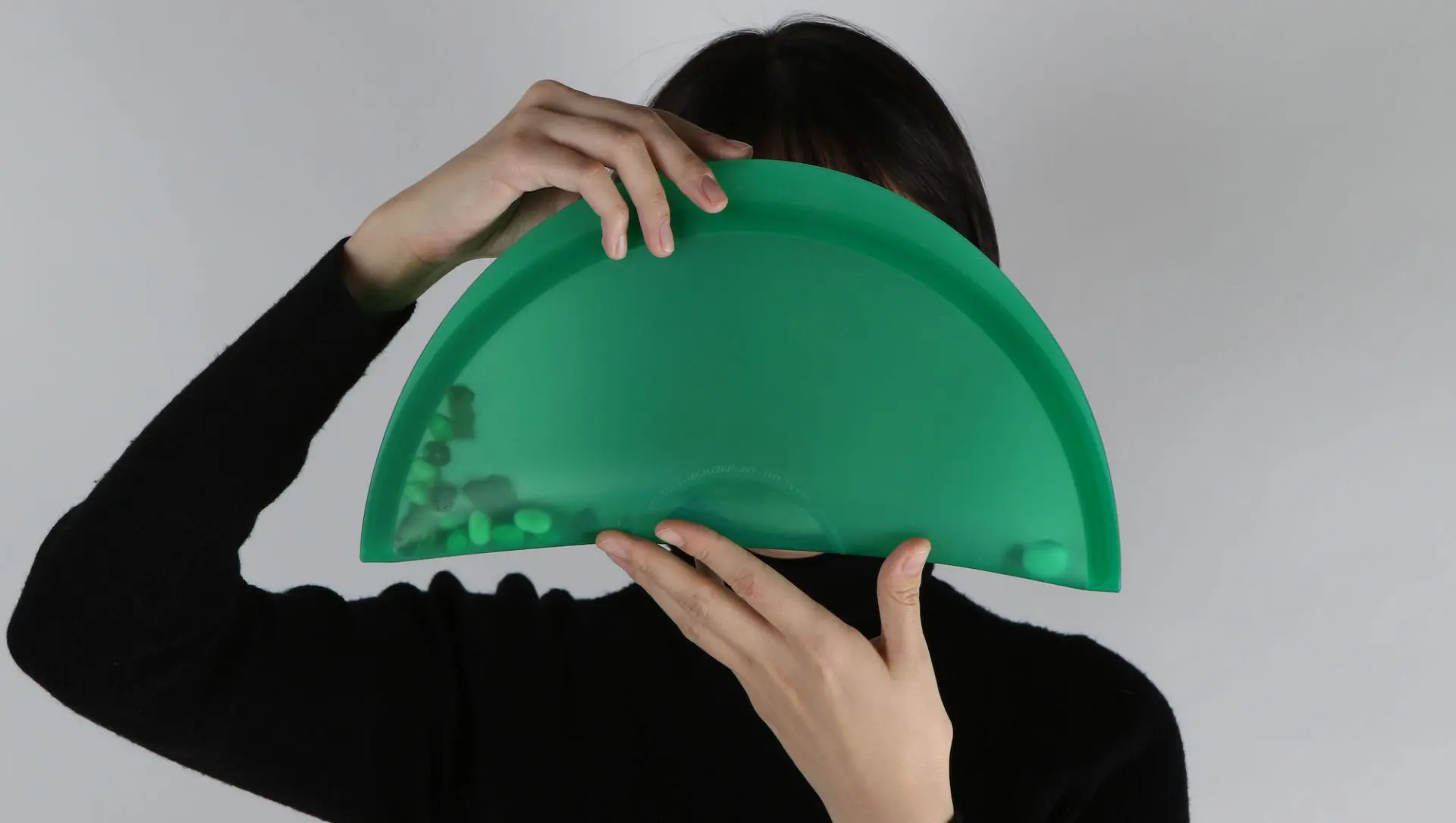What makes a design conference go from informative to inspiring?
Understanding this is not just an individual act. It is a collective act to reframe the design challenge: How do we empower participants to co-create, prototype, and refine an ideal design conference experience for service providers and recipients?

I realized that it is still not easy to set up a series of standard universal criteria to measure the quality, participants’ expectations, and presenters’ experiences. There are so many different types of design conferences, talks, and webinars depending on the design disciplines, conference budget, hosting locations, local culture, policies, weather, and so many other factors that could affect the quality and experience of design conferences.
As a young design professional, I think about the four aspects that motivate me to attend a design conference:
- Publication: present and publish the latest research and projects to the professional design communities in academia.
- Knowledge: learn about the latest information in the field.
- Network: build meaningful connections within or outside the similar academic research areas.
- Experience: look for inspiration within or outside the professional domains, and many other reasons.
The article also discuss three highlight tensions to conclude the observation and findings
- Information versus insight
- Transactional versus conversational
- Product versus process
Right after finishing my Ph.D. written qualifying exam at Massachusetts Institute of Technology (MIT) and back from a four-day academic trip in New York City participating in, presenting, and co-hosting the International Design Conference (IDC) and Industrial Designers Society of America (IDSA) Education Symposium (Figure 1), a mix of feelings comes through my mind: contentment, happiness, frustration, exhaustion, passion, and inspiration.
On my way back to Boston, I was inspired by one seemingly random but critical question from my colleague: “Why don’t they (the conference presenter) make the slides’ font bigger? It makes it very frustrating to read.” This made me think about my previous design conference experiences to reflect on the following three questions:
- What makes a design conference great, impressive, and inspirational?
- What motivates me to contribute my research to design conferences?
- Why I am passionate about being part of a design conference as a participant or as a host?
We all know hosting a design conference or conference in general is never an easy task. It requires people, time, budget, organizations, resources, publication, marketing, business, logistics, branding, and many other factors we might not realize behind the scenes.
If we consider planning a design conference as a service design project, there is so much room to improve, change, and play with.
Since I started my academic journey at MIT four years ago, I have participated in and presented at some design- or engineering-relevant conferences, such as IDC and IDSA Education Symposium, International Conference on Engineering Design (ICED), Design Management Institute (DMI) Academic Design Management Conference (ADMC), Digital Research in the Humanities and Arts (DRHA), Design Research Society (DRS), and International Association of Societies of Design Research (IASDR).
I want to capture and share some of my early thoughts to explore how and what we can make design conferences move from informative to inspiring. I used the term “design” conference because this article is based on my personal conference experience as a participant and presenter in mostly service design- or engineering-related conferences or talks across the globe.

The purpose of participating in a design conference
People have various reasons to attend design conferences. As a young design professional, I think about the four aspects that motivate me to attend events: (1) publication: present and publish the latest research and projects to the professional design communities in academia, (2) knowledge: learn about the latest information in the field, (3) network: build meaningful connections within or outside the similar academic research areas, and (4) experience: look for inspiration within or outside the professional domains, and many other reasons.
These are the four aspects: publication, knowledge, network, and experience that remind me why I should participate in design conferences and stay active. These four aspects can also serve as criteria to evaluate the quality of a design conference.
Aspect 1. Publication: find your community
“Publish or perish” is an interesting saying that I heard in academia from my advisor. It indicates that publication can be a major attraction to participate in design conferences, because designers, researchers, scientists, or academic professionals want to present their latest research works and designs. To successfully publish works, participants need to submit the conference paper ahead of time, approximately 6-8 months, and it will take longer if it’s a journal paper.
Before we submit our research works or projects, we can look at whether design conferences provide further publication opportunities for journal papers or book chapters instead of only conference proceedings.
We can also do the homework to understand who normally submits their research to which types of design communities. Who is the targeted audience who will attend the design conference and read your papers? Who will review the papers?
A great design conference or talk in general can help you find your communities in terms of further exploring your research areas, connecting with other collaborators, looking for possible research opportunities, funding, and much more (Figure 2).
For example, I have joined, presented, and published my research works at the IDC and IDSA Education Symposium for three consecutive years. The conference is positioned more toward industry with a strong connection with design education and academics.
Even though IDSA began as an industrial design association, every year, the conference content and theme have evolved to become more diverse, integrating other design disciplines and perspectives, such as how gender bias influences industrial designers, and women in design (WID) initiatives.
Some of my service design research works fit the theme of the conference this year, so I submitted them and used IDC and IDSA Education Symposium as a great chance to connect with industry experts, design professionals, and other design educators.

Aspect 2. Knowledge: learn from your journey
Besides sharing your latest research and design works in design conferences, participants can also leverage their time in the conference to have a more engaging way to be exposed new knowledge, experiences, and information sharing with other researchers.
There are many ways and channels to acquire new domain knowledge, especially since the pandemic: the usage of Zoom calls, the ritual of work-from-home culture, and the setup of remote working environments have opened new learning process and communication approaches.
This also influences the different formats that design conferences can offer and experiment with. There are many design conferences offering hybrid ways of participating associated with different ticket prices, locations, costs, and communities.
I still prefer an in-person format to attend the whole design conference, since the learning comes not only from participating in the conference itself but also from the moment that I start to book tickets, travel, and interact with other participants (Figure 3).
For example, when I joined the 2023 ICED hosted by the Design Society in Bordeaux, France, I was inspired by how engineers consider design approaches and creative tools as an academic and scientific process. Fresh and innovative perspectives have opened my understanding of the intersection of service design and system engineering.
In addition, it was also my first time in Bordeaux, France. Bordeaux is famous for wine and cheese. After finishing my conference presentation, I went to the wine tasting tutorial to experience its services.
This reminds me that learning opportunities can always come outside the conference. I had a great time applying my learning and design knowledge in real life by enjoying and experiencing wine-tasting services.

Aspect 3. Network: build meaningful connections
Another benefit to participating in design conferences is to build meaningful connections with people from various backgrounds but similar research areas. A good design conference will integrate networking sessions during the conference, such as conference opening night, gala party, baffle-style dinner, and coffee breaks (Figure 4).
One psychological reason is participants want to be seen, valued, and connected. We need to put participants in the center of planning the design conference flow considering more comprehensively what participants need, want, and expect.
Hosting a good design conference not only provides one way of the communication channel from organizer to audience but also requires a socially engaging and friendly environment to invite the audience members to interact with each other.
For example, when I participated in a three-day DMI ACMD conference in Toronto, Canada a year ago, they planned to have multiple extended lunch times and they hosted a closing workshop discussion section to connect with people on the final day.
In general, a good conference experience makes participants feel seen, appreciated, and celebrated whether through conference presentation, keynote speaker sharing, conference workshop hosting, or other design conference sessions.

Aspect 4. Experience: measure your expectation
If we view designing a design conference as a type of service design, how can we create a human-centered conference experience that cares about each touchpoint starting from planning and designing conferences and activities, promoting conference information and branding through omni-channels? How can we choose the right keynote speakers to ensure they match the conference theme and marketing position to ensure to align with the brand of the design conference? This also can attract the right audiences and paper submissions that enable us to think how we establish a design conference business model by setting the reasonable conference ticket price, hosting location, conference budget, time resources, to labor needs.
The overall experience of a design conference matters both for service providers, such as conference hosts, hosting universities, sponsors, production agencies, local city government, and other key stakeholders, and service recipients, such as paper presenters, keynote speakers, researchers, students, professors, and other event participants.
A great design conference experience originates from managing the right expectations for participants. We might be able to tell the clues from the ticket price as one reference, but most of the time it is associated with participants’ behavior and expectation, such as how they feel and perceive the service experiences.
For example, if the whole design conference is hosted in a hotel, how do we ensure the conference can provide enough water and coffee or maybe snacks to energize most presenters and participants for a day?
There are some interesting and a bit crazy ideas to improve the design conference experiences. For example, maybe in the future, the conference nametag can be a temporary tattoo to help reduce waste such as paper and plastic covers with a string attached to it.
Or maybe the price of the design conference ticket can be measured and sold by the engagement level of participants or selected speakers rather than measuring by the day or the whole design conference as a package.

Three tensions to consider
The four aspects—publication, knowledge, network, and experience—mentioned above from my personal experiences at design conferences might provide you some ideas as a reference to reflect on “What makes a design conference informative, impressive, and inspirational?”
If we were in design education or academia in general, we would also want to ask ourselves, “Why do you want to participate in that specific design conference every year? What are the values and benefits we believe in?”
There are many reasons to reply to these questions, such as the academic requirement for more publications, the desire to learn the latest knowledge, the chance to build new connections, or the need to seek inspirational experiences.
However, three tensions—(1) information versus insight, (2) transactional versus conversational, and (3) product versus process—could also provide fresh angles to conclude.
Tension 1. Information versus insight
Most presenters are eager to share with audiences about their data. For me, the content of the slides can count as factual-based information, which is also critical as part of a presentation. But this is still not the same as storytelling combined with research insight.
Fewer presenters are willing to share with us the behind-the-scenes stories such as how they made sense of the data by providing extra layers of information to form their invaluable research insight.
From the audience’s perspective, compared with the information in the presentation, people will more easily remember the stories the presenter tells, because they will project their personal interpretations, memories, and life experience onto them.
Ideally, a great design conference can help presenters distill the essence of the research paper by enabling them to think about the key takeaways from the works and how they can use very simple language with compelling visuals or videos and intuition to explain to the audiences without relevant backgrounds.
Storytelling with a balanced proportion of information and insight can effectively elevate the quality of presentation. Thus, it naturally can enhance the overall conference experiences from the level of individuals to collectives.
Tension 2. Transactional versus conversational
A great design conference presentation and vibe is not just a one-off experience for conference participants and presenters. We know that becoming a great design conference is accumulated through process, branding, and all the decision-making to avoid a “one-off” experience.
Instead, we change each touchpoint in a design conference from a transactional mindset to a more conversational moment that entices participants to come back again.
A transactional mindset can be considered as more like short-term goals to get things done whereas a conversational moment is to create an open-minded environment to help establish long-term goals and achieve them with more purposeful and thoughtful approaches.
Ultimately, a great design conference wants to have its own communities and fans to cultivate its own features and creative culture. For example, the community of IDC originated from IDSA, the community of ICED comes from the Design Society, and the community of ADMC is sourced from DMI.
Tension 3. Product versus process
I remember one of the aha and beautiful moments of participating in a great design conference was feeling engaged with the presenters’ stories and lost in their creative process without awareness.
Participants want to know concrete product results such as design frameworks, design works, or service models as one of the outcomes of design research, but they are also more curious to learn about the design research process.
Unlocking the design process is like opening the black box for the audience/participants to help them think carefully about how they can be applied to their own research works. A great design conference might help presenters form the precise narrative of their presentation, reveal the intriguing design process, and come up with informative yet inspiring stories.
Instead of only emphasizing showing the design works or project results, I think presenting the creative process with intimate personal stories could be more powerful to help the audience engage in a design conference.
Summary: collective effort to make a change
Concluding and combining four proposed key aspects:
(1) Publication: find your community,
(2) Knowledge: learn from your journey,
(3) Network: build meaningful connections, and
(4) Experience: measure your expectation,
with three highlight tensions:
(1) Information versus insight,
(2) Transactional versus conversational and
(3) Product versus process,
I realized that it is still not easy to set up a series of standard universal criteria to measure the quality, participants’ expectations, and presenters’ experiences.
There are so many different types of design conferences, talks, and webinars depending on the design disciplines, conference budget, hosting locations, local culture, policies, weather, and so many other factors that could affect the quality and experience of design conferences.
Understanding what makes a design conference go from informative to inspiring and even impactful is not just an individual act. It is a collective act to reframe the design challenge: How do we empower participants to co-create, prototype, and refine an ideal design conference experience for service providers and recipients?
Acknowledgement
I appreciate Dr. Joseph F. Coughlin, Founder and Director of MIT AgeLab, my life mentors and Ph.D. advisors, and the MIT AgeLab team for sponsoring and supporting me to attend various types of design conferences to allow me to experience these in-person or hybrid academic journeys for a design educator. It’s a personal experience that keeps pushing me to learn, grow, evolve, and transform.





